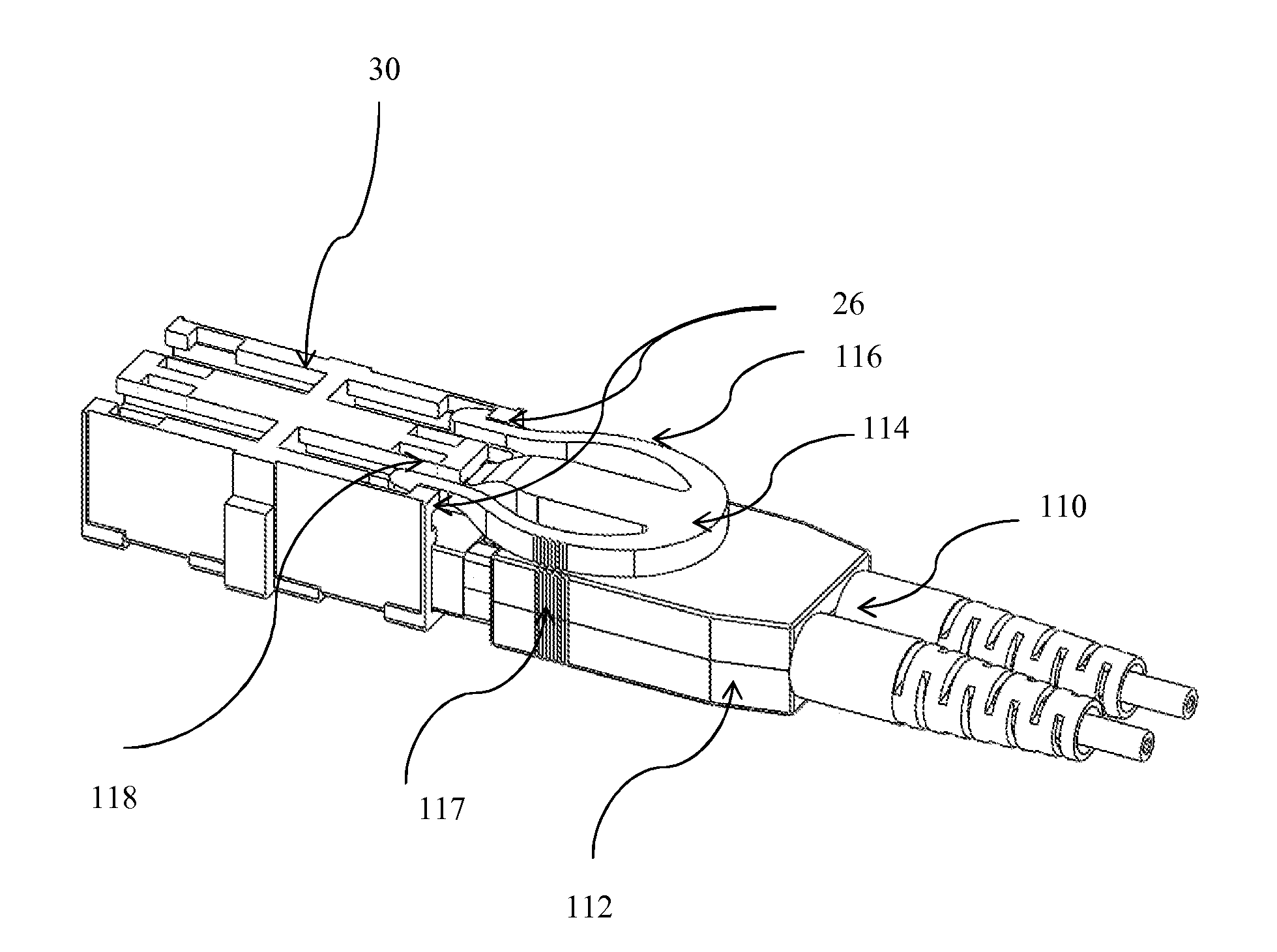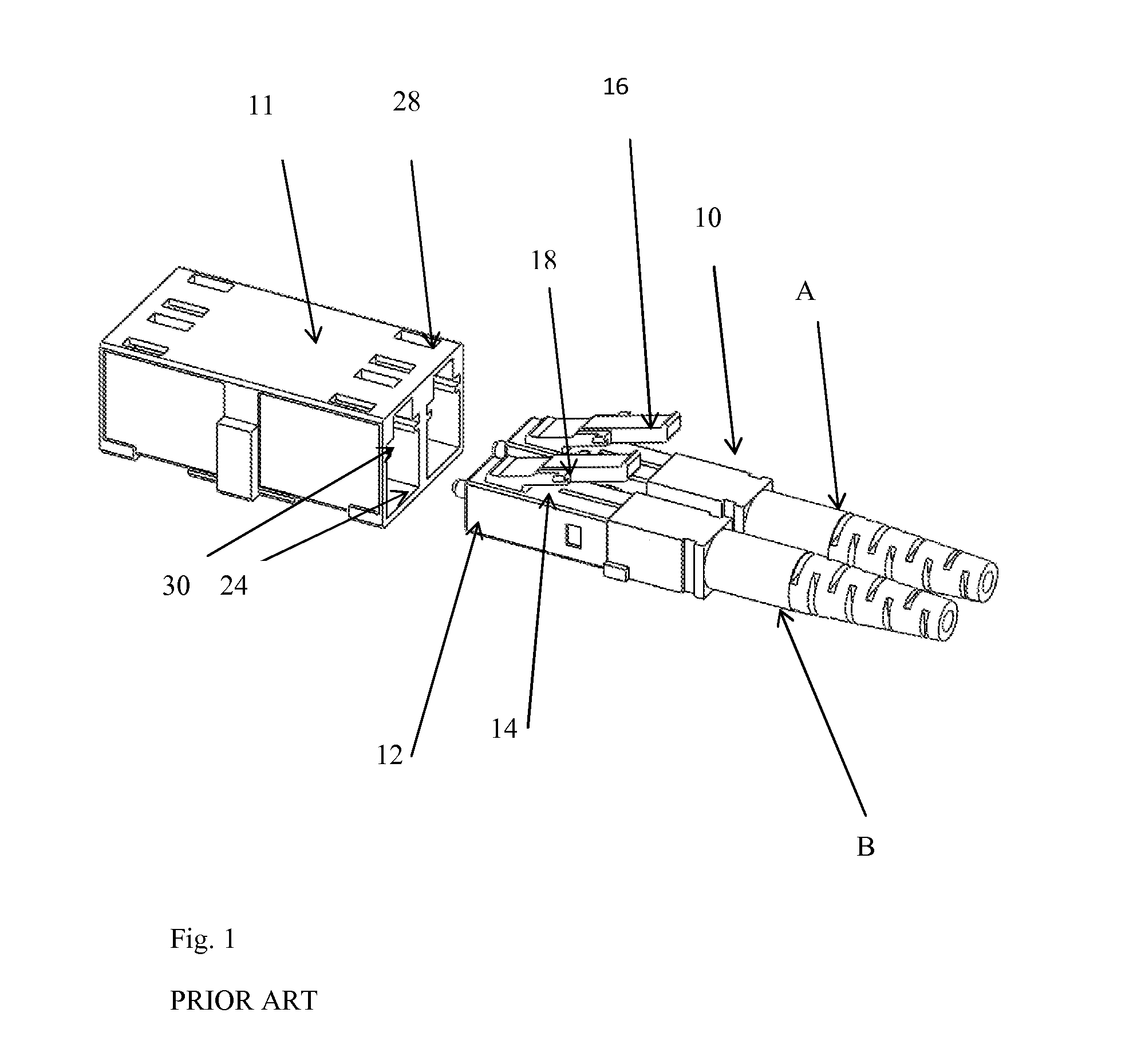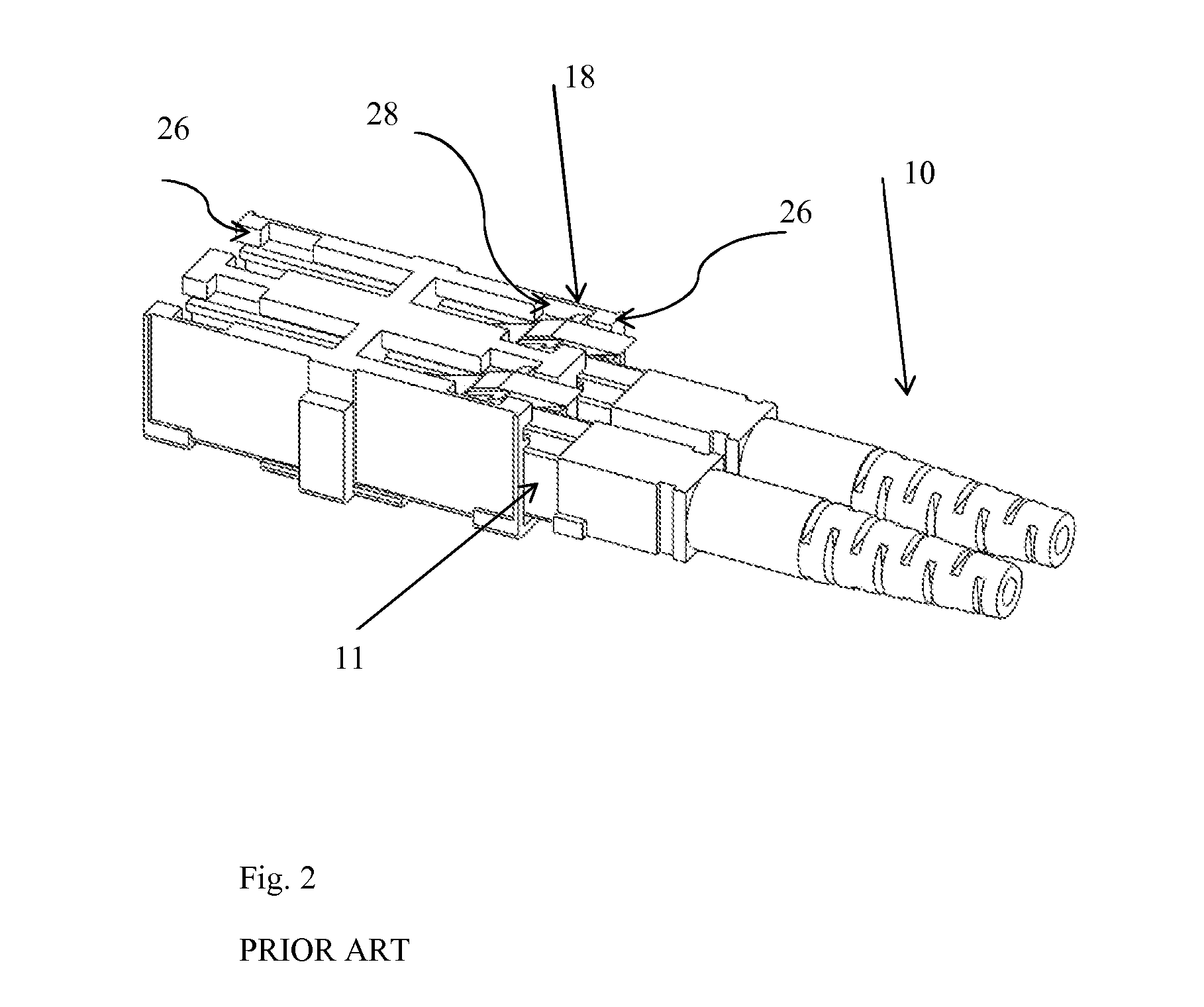Fiber Optic Connector
a fiber optic connector and connector technology, applied in the field of fiber optic connectors, can solve the problems of difficult access to the vertical latch, and difficult disconnection of the connector from the adaptor, and achieve the effects of simple servicing, easy disassembly and assembly, and easy rotation of the connector
- Summary
- Abstract
- Description
- Claims
- Application Information
AI Technical Summary
Benefits of technology
Problems solved by technology
Method used
Image
Examples
Embodiment Construction
[0033]Referring now to FIGS. 1 and 2, there is shown an LC connector 10. The connector 10 comprises an elongate body 12 configured to receive and terminate two optical fibers A, B, and a latch mechanism 14. The latch mechanism 14 comprises a latch arm 16, mounted on an upper surface and at the connection end of the body 12. The latch arm 16 is sprung or biased away from the body 12 in a vertical direction. Each latch arm 16 includes a pair of latch retention lugs 18 extending laterally either side of each of the arms 16. The adaptor 11 to which the connector 10 is to be mated comprises an elongate body 22 bounding an opening 24. The opening 24 corresponds in size and shape to a connector body 12 so as to receive and terminate two optical fibers. The elongate body 22 includes at least one pair of retention shoulders 26 and at least one retention cavity 28. The retention shoulders 26 are formed as part of an indent or recess in a channel 30 or keyway within the adaptor 11. The latch r...
PUM
 Login to View More
Login to View More Abstract
Description
Claims
Application Information
 Login to View More
Login to View More - R&D
- Intellectual Property
- Life Sciences
- Materials
- Tech Scout
- Unparalleled Data Quality
- Higher Quality Content
- 60% Fewer Hallucinations
Browse by: Latest US Patents, China's latest patents, Technical Efficacy Thesaurus, Application Domain, Technology Topic, Popular Technical Reports.
© 2025 PatSnap. All rights reserved.Legal|Privacy policy|Modern Slavery Act Transparency Statement|Sitemap|About US| Contact US: help@patsnap.com



